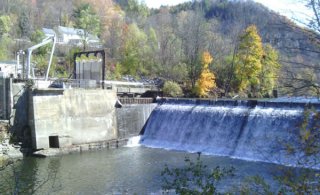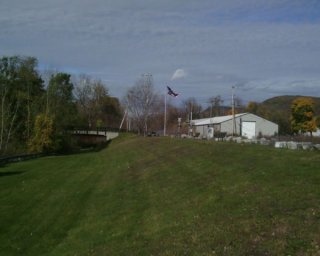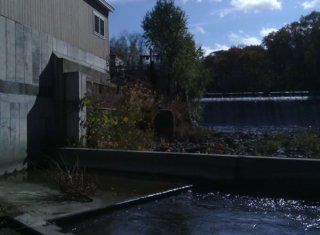R1 Success Story: Pownal Dam, Pownal, Vt.

EPA Grant Recipient:
Windham Regional Commission, Vermont Agency of Commerce and Community Development, Bennington County Regional Commission
Grant Types:
Revolving Loan Fund, Assessment
Current Use:
Hydroelectric Dam
Former Uses:
Textile factory
Download Success Story:
Pownal Dam Town of Pownal, Vt. (pdf)
A nonfunctioning 1900s dam that once powered industry has been brought back to life and now provides electricity to a nearby college, a medical center and town buildings in the small town of Pownal. The cleanup and redevelopment of the Pownal Dam by a public-private partnership has helped the region reach its renewable energy goals.
Pownal Dam was selected as a Brownfields site by grantees who wanted to help the developer rehabilitate the defunct dam. This federal funding, vital to the redevelopment, helped motivate developers to begin work on a significant project that is a model for how local, state, federal and private entities can work together. The outcomes of this project include cleaner waterways and the production of green energy.
Motivation for Redevelopment
The hydropower dam had not operated since the 1980s. PCB sediments had flowed down the river and were trapped behind the 18-foot high concrete dam. Although the dam is next to the Pownal Tannery Superfund site, the contamination addressed by the Brownfields program originated from an industrial source several miles upstream. A major concern throughout the process was making certain that the trapped PCBs were not released and able to flow downstream.
Congress has directed the EPA to give consideration to waterfront brownfield sites and clean energy projects, making this redevelopment an ideal candidate for grant funding. The nearly $4 million redevelopment received almost $300,000 from the EPA to assess contaminated sediments and allow for removal during the renovation of the dam. Partners included the private developer, the Town of Pownal, and three grant recipients: Bennington County Regional Commission, the Vermont Agency of Commerce and Community Development and the Windham Regional Commission.
"This project represents a significant continuation of efforts to address environmental issues in the Hoosic River while also helping the region take a major step toward attainment of our renewable energy goals. This innovative project will provide benefits well into the future by addressing a known environmental problem and through the generation of clean energy. On a personal level, it was a pleasure to work on another EPA Brownfields project with my friend [the late] Bill Scully, who I met while we worked together on the cleanup and redevelopment of the Vermont Tissue mill site located on the Walloomsac River in North Bennington, VT."
Jim Henderson
Environmental Program Manager at
Bennington County Regional Commission
Today

Pownal Dam now provides power to Southern Vermont College and Southwestern Vermont Medical Center, both in Bennington, as well as the town of Pownal. With the ability to generate 3.5 million kilowatts per year, the dam has far more capacity than it did in its original form (250 kilowatts per year). This hydropower project not only helps to change the energy landscape in Vermont away from non-renewable resources, it also creates new jobs, and removes streambed pollution from earlier industrial uses. In addition to reducing energy costs for town buildings, the development will bring in tax revenue.
The redevelopment of this site led to new cutting-edge techniques used to keep contaminated river sediments from flowing downstream. It also has brought an environmentally responsible and sustainable energy source to the Town of Pownal and surrounding areas.

For more information:
Visit the EPA Brownfields website at www.epa.gov/brownfields or contact Joe Ferrari, (617) 918 1105 or ferrari.joe@epa.gov.
EPA 560-F-20-183
November 2020
